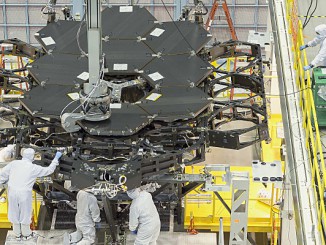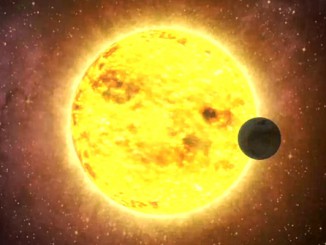As the Moon slowly covers the face of the Sun on the morning of 9 March 2016, in Indonesia, a team of NASA scientists will be anxiously awaiting the start of totality — because at that moment, their countdown clock begins. They plan to take 59 several-second exposures of the Sun in just over three minutes, capturing data on the innermost parts of the Sun’s volatile, superhot atmosphere — a region we can only observe during total solar eclipses when the Sun’s overwhelmingly bright face is completely blocked by the Moon.
“The Sun’s atmosphere is where the interesting physics is,” said Nelson Reginald, one of several space scientists from NASA’s Goddard Space Flight Center in Greenbelt, Maryland, who will conduct an experiment in Indonesia during March 2016’s total solar eclipse. “A total solar eclipse gives us the opportunity to see very close to the solar limb.”
The lower part of the Sun’s atmosphere, the corona, is one of the most scientifically interesting areas of the Sun. It’s thought to hold the keys to several solar mysteries, from the acceleration of the solar wind, to the birth of explosive clouds of solar material called coronal mass ejections, to the mysterious heating of the corona as a whole. Using a new instrument, the NASA science team will observe aspects of polarised light that carry information about the temperature and velocity of electrons in the lower corona.
Though it’s about as bright as the full Moon, the corona is ordinarily drowned out by the Sun’s much brighter face, except during total solar eclipses. To study the corona outside of total solar eclipses, scientists use instruments called coronagraphs, which create artificial eclipses by using solid discs to block Sun’s bright face and reveal the comparatively faint corona. But because light bends around sharp edges — a phenomenon known as diffraction — coronagraph discs obscure the inner corona, as well as the solar surface, to combat this effect.
“You can’t see the corona that close to the surface with a coronagraph. You cut off a large portion of the innermost corona,” said Nat Gopalswamy, principal investigator of the eclipse experiment at Goddard. “The main advantage of the total solar eclipse is seeing much closer to the Sun’s surface.”
The team will use their three minutes of totality to examine the polarised light coming from the Sun’s inner corona, light that contains information about the temperature and velocity of the electrons there. Light is polarised when its electric field oscillates along one axis, for instance, up-and-down or side-to-side. Unlike dust, electrons mainly scatter polarised light, meaning that isolating the polarised light can give information about the temperature and flow speed of coronal electrons. Polarised light scattered by these electrons dominates in the regions of the corona closest to the solar surface — so total solar eclipses are our best chance to gather this information.
“We first used this instrument during the 1999 total solar eclipse in Turkey,” said Reginald.
The minutes-long timeframe of total solar eclipses limits the amount of data we can collect during our occasional glimpses at the inner corona, so the team rebuilt their instrument over the last year to make it even faster.
“Before, we would have had use a polariser that would turn through three angles for each wavelength filter,” said Reginald. “The new polarisation camera eliminates the need for a polarisation wheel.”
Rather than using a hand-turned polarisation wheel to take three separate images in each polarised direction, the new camera uses thousands of tiny polarisation filters to read light polarised in different directions simultaneously. Each pixel in the new camera is made of four subpixels with differently-oriented polarisation filters, which provides the team with four separate but simultaneous images of the corona and cuts out the need to change polarisation filters between exposures.
“We’ve cut down the length of time required for our experiment by more than 50 percent,” said Gopalswamy. “The polarisation camera is faster and less risky, because it’s one less moving part.”
Though the team will be performing the experiment for the first time in the province of North Maluku, Indonesia — chosen for its accessibility and high chances of clear skies during the eclipse — they’ve already given their updated instrument a test run.
“The brightness of the full Moon is about equal to the brightness of the total solar eclipse,” said Reginald. “So we set up our telescope in the parking lot for practice.”



